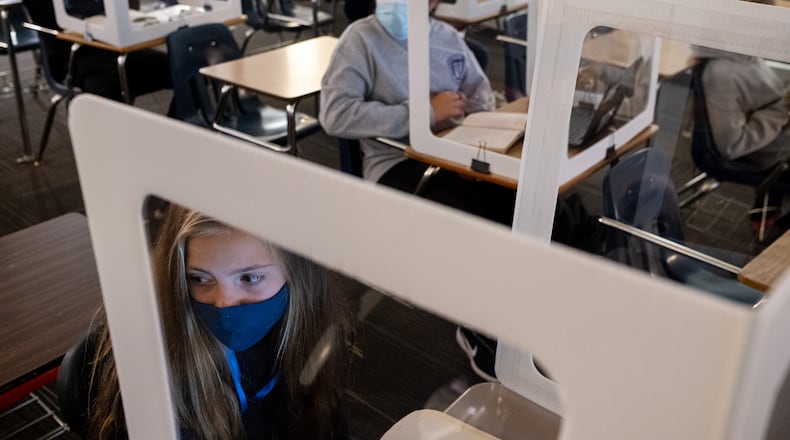A study conducted by the Centers for Disease Control and Prevention has shed new light on how COVID-19 takes hold in schools.
The study, done in partnership with Marietta City Schools, Cobb & Douglas Public Health and Georgia Department of Public Health, took place Dec. 1 through Jan. 22, and was conducted amid a COVID-19 case surge during the holiday season.
A team of about 20 people from the school district, CDC and local and state public health departments assisted with COVID-19 testing and identifying people who came in contact with positive cases.
In December and January, the team found there were 86 people who eventually tested positive for COVID-19 who came into schools while they were infectious, resulting in more than 1,200 people identified as close contacts, said Dr. Snigdha Vallabhaneni, an infections disease physician with the CDC who participated in the study. Close contacts are identified as individuals who were within six feet of a person who tested positive for COVID-19 for longer than 15 minutes.
Fortunately, Marietta schools did a thorough job with contact tracing, so they “got a pretty high participation rate” when those close contacts were asked if they wanted to be tested for COVID, Vallabhaneni said.
“You guys are all collectively contributing so much to the general body of knowledge about how to keep schools safe,” she said.
The study found three primary ways COVID was spreading in schools: indoor winter sports, staff-to-staff contact and in the elementary classroom setting.
Vallabhaneni said the team wasn’t surprised by the results related to indoor sports, but were intrigued by the high transmission of COVID-19 among teachers. Teachers and staff were more susceptible to passing COVID when they planned lessons or ate lunch together, two examples of when they were more likely to let their guard down, Vallabhaneni said.
Elementary school classrooms were also likely to be the source of high transmission rates due to the number of students who are taking advantage of in-person learning. Marietta Superintendent Dr. Grant Rivera said some elementary schools saw as many as 90 percent of their students return to the classrooms.
To help curtail the spread, team members and district officials went through each classroom and made adjustments, such as removing non-essential furniture, spreading out desks and limiting how many students could gather on a classroom rug for an activity.
At the staff level, educators are now collaborating virtually instead of in-person. One school moved the copier machine from the teacher work room to the cafeteria to create more opportunities to maintain social distancing, Rivera said. Teachers and staff are also not allowed to eat lunch with colleagues indoors unless they were on opposite sides of a room.
Marietta City Schools began a phased reopening of classrooms in September, and offers both in-person and remote learning to students.
Cobb County continues to experience high community transmission of COVID-19, but the numbers are looking better, said Rachel Franklin, director of epidemiology at Cobb & Douglas Public Health. As of Thursday, the county’s two-week COVID case number per 100,000 people was 394, according to the Georgia Department of Public Health’s website. On Jan. 25, the rate was 1,005. On the first day of the study, the two-week case rate was 411 per 100,000 people.
“We have a long way to go,” she said. “I don’t want everyone to be complacent.”
Vallabhaneni said getting teachers vaccinated could be the key in reducing school-based transmissions.
Gov. Brian Kemp announced Thursday that he will expand vaccination distribution to include Georgia’s 450,000 educators and school staff starting March 8. Rivera said he will not require Marietta teachers and staff to get vaccines, but will provide informational sessions to help them make informed decisions.
“We are prepared,” he said. “We are ready to move.”
About the Author
Keep Reading
The Latest
Featured



